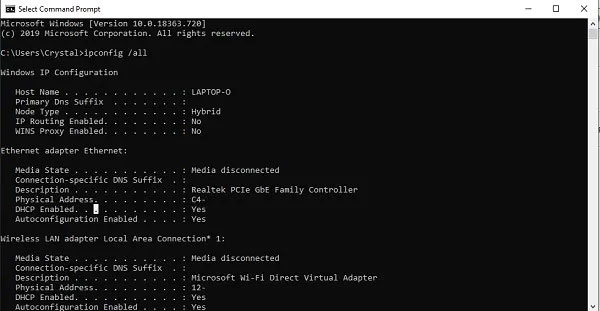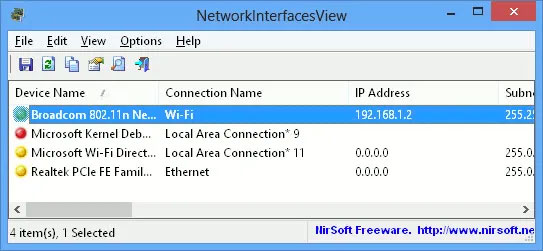How to view Network Adapter details in Windows 10
If you are a network administrator or advanced user, you probably have multiple network cards in your computer. Deep digging into device details can be tricky, if you want to see detailed information about your network adapters on all the network adapters you have installed. But in fact this is not a difficult thing.
1. Use the System Information tool
One of the easiest ways to view network adapter details in Windows 10 is to use the System Information tool, which provides details about each individual network interface. To open the System Information tool, follow the steps below:
Step 1: Open the Start menu and enter msinfo32 or 'system information'. Select System Information from the results. This will open the System Information tool. Please note that it may take several minutes before the actual data are displayed on the window.
Step 2: Go to Components> Network> Adapter.
Step 3: You can scroll through the list of adapters in the right pane.

To copy any line of information, simply select it and press Ctrl + C. This will copy the information to the clipboard. You can also export complete information about network adapters by going to File> Export.
You can also get the same information using the command line, but less information will be provided by the System Information tool. To get information about network interface via command line, just open Command Prompt and issue the following command:
Ipconfig / all
This will display details about all network interfaces, whether they are active or not.

2. Use the NetworkInterfacesView tool
NetworkInterfacesView is a handy portable tool from Nirsoft. The benefit of NetworkInterfacesView is that it uses the Windows Registry to get information about the active and inactive network adapters. It will list both the network adapters in use, as well as the network adapters that have been used previously on the computer. NetworkInterfacesView will provide you with 3 device states:
- Active devices are shown with green status icons.
- Inactive devices are shown with a yellow status icon.
- Disconnected devices are shown with red status icons.

NetworkInterfacesView's default view shows only a brief overview of all network adapters. The view expands as you scroll horizontally. If you want to see details about a particular adapter, just double-click on the adapter name and a new window will open with details about the device.

Another advantage of NetworkInterfacesView over the built-in System Information utility is that it allows users to store information about individual adapters as well as export complete network adapter information.
To save details about an individual adapter, select that item, then click 'Save selected item' from the File menu. To save details about all listed items, select 'HTML Report - All items'.
NetworkInterfacesView displays the following information about each network adapter:
- Device Name
- Connection name
- IP Address
- Subnet mask
- Default gateway
- DNS server
- DHCP information
- DHCP server
- Instance ID (ID adapter)
- Instance GUID (GUID adapter)
- MTU
- Status
- MAC Address
All of this information can be obtained from the System Information tool (msinfo32), but NetworkInterfacesView lets you view network adapter details in a more user-friendly format.
Despite its older interface, this tool is currently supported and works well for both 32-bit and 64-bit versions of Windows 10. Also, it's free to use.
You should read it
- How to Change a Computer's Mac Address in Windows
- How to check the speed of the network card on Windows 10
- Choose to buy a replacement laptop adapter
- How to set up a USB WiFi Adapter on a Raspberry Pi
- Powerline adapter or mesh WiFi is the best choice for your home?
- Sony recovered 69,000 of VaiO's AC Adapter sources
 How to back up the EFS file encryption key and certificate in Windows 10
How to back up the EFS file encryption key and certificate in Windows 10 How to delete the $ Windows. ~ WS folder in Windows 10
How to delete the $ Windows. ~ WS folder in Windows 10 How to choose default microphone on Windows 10
How to choose default microphone on Windows 10 How to enable / disable Security and Maintenance notifications in Windows 10
How to enable / disable Security and Maintenance notifications in Windows 10 Learn Pktmon: Windows 10's built-in network monitoring tool
Learn Pktmon: Windows 10's built-in network monitoring tool Try Disk Usage, a new tool to analyze hard drive space on Windows 10
Try Disk Usage, a new tool to analyze hard drive space on Windows 10